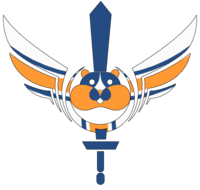Luchtmobiele Brigade (Batavia): Difference between revisions
No edit summary |
mNo edit summary |
||
| Line 1: | Line 1: | ||
{{Batavia Article}} | |||
{| class="toccolours" style="float:right; margin: 0 0 1em 1em; font-size: 85%; width: 30em;background-color:#FFFFFF;border:1px solid #3aa12a;" | {| class="toccolours" style="float:right; margin: 0 0 1em 1em; font-size: 85%; width: 30em;background-color:#FFFFFF;border:1px solid #3aa12a;" | ||
Revision as of 16:17, 25 November 2020
|
| |
|
| |
| Active: | 1685 AN –; |
|
| |
| Allegiance: | Batavia |
|
| |
| Personnel: |
|
|
| |
| Type: | Rapid reaction force, air assault, air mobile, airborne operations, close air support |
|
| |
| Nickname: | De Wraakzuchtige hamsters (Vengeful Hamsters) |
|
| |
| Current Commander: | Brigadegeneraal Jan Koopsla |
|
| |
| Conflicts & Deployments | Operation Brasen Wall (As predecessor formation) |
The Luchtmobiele Brigade, also known as the Wraakzuchtige hamsters (Vengeful hamsters), of the Batavian Armed Forces is an air assault brigade and rapid infantry unit, in active service of the Kingdom of Batavia. It claims descent from an eponymous formation that had been raised as a part of the Volksarmee of Kasterburg, trained and equipped by the Imperial Mission (IMK) and originally garrisoned at Kolmen, with additional support elements at St. Elmo Military Base and Jodocus van Haltna Airfield. Nowadays, the barracks and airport of Caesterburgh, are the home base of the brigade.
Background
Ever since 1629 AN, the Tyrannocricetus aliger made havoc to central Benacia. The fearful, highly aggressive species of giants, was deemed a danger to most of the continent. Its sheer destructive power made it an inspiration for the members of the Luchtmobiele Brigade. In 1686 AN, Sergeant Koopi Kat - a Batavian officer (and failed painter) of Kildarian descent from Kingsrise - found a filthy napkin in the mess. It immediately gave him an idea. The black coffee stain in the shape of a hamster and what looked like wings. His compatriots claim that Koopi's sight was, by then, heavily influenced by a good amount of alcohol. Nonetheless, the discussion between him and his fellow officers, inspired the amateur painter to draw the logo of the Brigade.
Koopi sold the design to the Armed Forces, earning himself 25 Kruys and 10 bottles of cheap Dietse wijn (Dietish wine), and a fine of 5000 Kruys for drinking during duty. The pride of the brigade - the vengeful hamster, ready to strike with its powerful fangs - was born.
History
- The history of the first foundation of the Luchtmobiele Brigade may be found on its article page.
With the collapse of an independent United Benacian Republic in the 1680's, some of the imperial advisors defected to the Unified Governorates of Benacia. Others, who decided to remain, were eventually escorted by Batavian officials and forced to leave the country. The de Withe Cabinet, while willing to use the expertise of the foreign instructors, were heavily pressured by the nationalists to free the country from foreigners.
Despite pressure of decreasing the Brigade's budget, the Batavian government became increasingly aware that there was a need for a rapid reaction force for both regional and global operations. The dawdling of the political elite eventually became a blessing in disguise when in 1685 AN the Batavian Revolution started.
The revolution hindered the original plans to close St. Elmo Military Base, and the retreat of the leftists to the northern islands, made the air assault brigade an important part of any possible attack or invasion plan. With limited funds, the organisation was expanded with new officers and experts were hired (some who had been forced to leave the country).
Organisation
- Luchtmobiele Brigade
- IMK Instruction Troop at Hamster Barracks, Caesterburgh
- Staff Squadron at Hamster Barracks, Caesterburgh
- Infantry Regiment at Hamster Barracks, Caesterburgh
- Artillery Regiment at Hamster Barracks, Caesterburgh
- Engineer Regiment at Hamster Barracks, Caesterburgh
- Supply Regiment at Hamster Barracks, Caesterburgh
- Medical Services Squadron at Hamster Barracks, Caesterburgh
- Field Maintenance Regiment at Hamster Barracks, Caesterburgh
- Air Assault Regiment at Jodocus van Haltna Luchthaven, Caesterburgh
- Air Assault Command & Pathfinder Squadron
- Tactical Aviation Squadron "Pieterszoon Hein" at Jodocus van Haltna Luchthaven, 's Koningenwaarde
- Meteorological Services Squadron at St. Elmo Military Base
- Joint Helicopter Squadron "Jan Crabbe" at Jodocus van Haltna Luchthaven, Caesterburgh
- Joint Helicopter Squadron "Joost van Dyck" at Jodocus van Haltna Luchthaven, Caesterburgh
- Joint Helicopter Squadron "Rode Klaas" at Jodocus van Haltna Luchthaven, Caesterburgh
- Joint Helicopter Squadron "Eenoog" at Jodocus van Haltna Luchthaven, Caesterburgh
- Attack Helicopter Squadron "Erasmus Reyning" at Jodocus van Haltna Luchthaven, Caesterburgh
- Attack Helicopter Squadron "Simon de Danser" at Jodocus van Haltna Luchthaven, Caesterburgh
- Maintenance & Supply Squadron at Jodocus van Haltna Luchthaven, Caesterburgh
